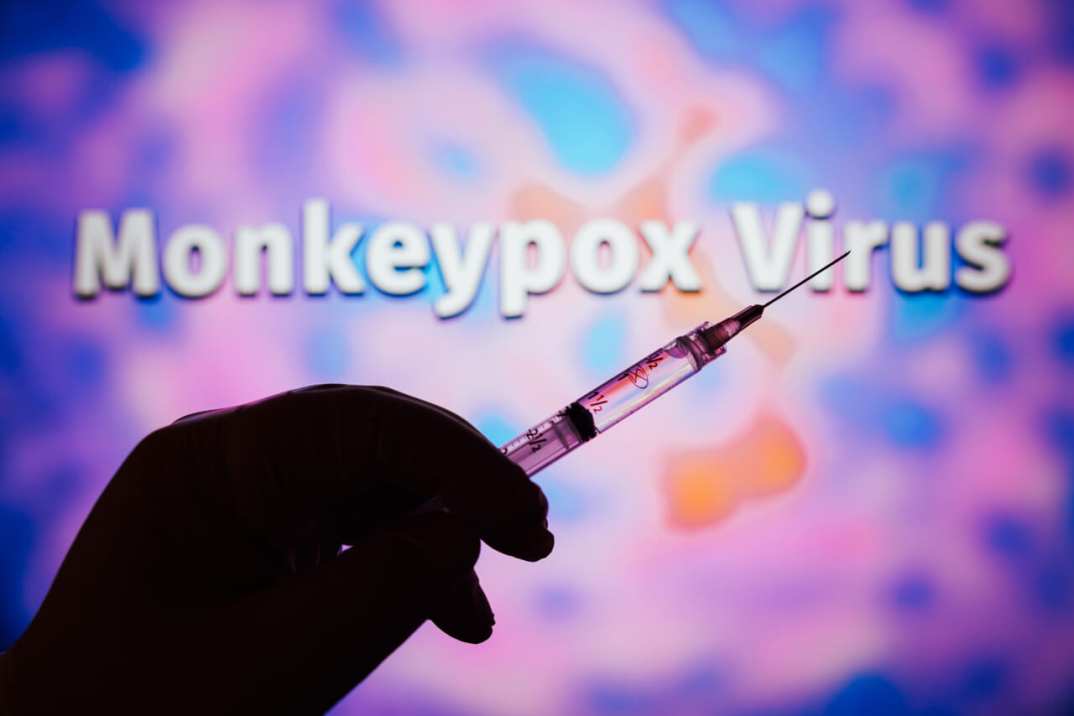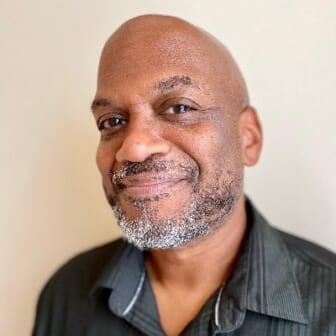Is monkeypox a Black disease? Many in the media seem to think so
OPINION: News outlets are being called out for using images of mostly Black and brown people with the disease, playing into harmful stereotypes, even as the outbreak is occurring in mostly white countries. Unfortunately, history shows us that this is nothing new.

Editor’s note: The following article is an op-ed, and the views expressed are the author’s own. Read more opinions on theGrio.
As the monkeypox virus spreads—and the media hype up this outbreak into the new COVID pandemic—news organizations are racializing and colorizing this new virus du jour. A rare and mild virus with a low infection rate, monkeypox has a history in remote parts of Central and West Africa. However, the cases these days are now coming from Europe and predominantly white countries such as the U.S, Canada and Australia. Although the 160 confirmed cases of monkeypox are located not in Africa but in numerous Western nations, news outlets such as ABC News, BBC, Sky News and Reuters have published images of pockmarked Black skin in their reporting.
As Washington Post columnist Karen Attiah noted about a since-deleted tweet from Reuters, “Y’all really couldn’t find photos [of] monkeypox on white skin to illustrate outbreaks in white-majority countries? This is what we talk about when mainstream media paints Black/African people as disease vectors and threats to white health.” Further, Black doctors and scientists seem to agree, based on their social media posts on the latest monkeypox racism.
The issue is real, and the situation is so serious that a United Nations agency has spoken out. A statement from the Joint United Nations Programme on HIV/AIDS (UNAIDS) called out monkeypox reporting that relies on media imagery and portrayals of African and LGBTQ people. According to UNAIDS, these images only reinforce racist and homophobic stereotypes and stigmas and undercut the public health response to diseases.
“Stigma and blame undermine trust and capacity to respond effectively during outbreaks like this one,” said Matthew Kavanagh, UNAIDS Deputy Executive Director. “Experience shows that stigmatizing rhetoric can quickly disable evidence-based response by stoking cycles of fear, driving people away from health services, impeding efforts to identify cases and encouraging ineffective, punitive measures.”
And African journalists have raised the issue as well. The Nairobi, Kenya-based Foreign Press Association, Africa (FPAA) condemned media outlets for using Black images to report on the monkeypox outbreak, noting that the virus can occur anywhere and should not be associated with a particular race of skin complexion.
“It is therefore disturbing for European and North American media outlets to use stock images bearing persons with dark/black and African skin complexion to depict an outbreak of the disease in the United Kingdom and North America,” the FPAA said, urging news organizations based outside of Africa to censure their staff and update their image policies.
“If you are talking about the outbreak of Monkeypox in Europe or the Americas, you should use images from hospitals across Europe or the Americas? Or in the absence of such use a collection of electron micrographs with labelled subcellular structures,” the association added, asking: “What is the convenience of using such images to tell the world how Europe and America are reeling from the outbreak of MonkeyPox? Is the media in the business of ‘preserving white purity’ through ‘Black criminality or culpability?
“The virus can occur in any region of the world, regardless of race or ethnicity…No race or skin complexion should be the face of the disease.”
Almost as if to settle the score and set the record straight, African news sources have featured a photo of a white monkeypox patient in their own coverage.
And yet, history shows us this is nothing new. Remember the Ebola virus? In 2014, Ebola fear, hate and racism swept America, as the name of the disease itself became a racial slur associated with West Africa and Black people. Ebola became a stand-in from Black people, the scary “other,” and was used to justify racial profiling, racist chants aimed at Black high schools, anti-immigrant discrimination and other racist hysteria.
Similarly, HIV/AIDS became associated with Haiti in the mind of white racists, which turned into policy based on the perception of Haitian immigrants as a high-risk group and the theory that AIDS came from Haiti. At the height of the AIDS crisis, the FDA banned Haitians from donating blood, and HIV-positive Haitian refugees were detained at Guantanamo. When Trump proclaimed that Haitian immigrants “all have AIDS,” he was scraping the bottom of the barrel and tapping into deep-seated American racist attitudes towards Black people and disease, with the underlying belief that all Black people are dirty anyway.
Moreover, in the age of COVID-19—when Black people are fighting against the virus and systemic racism at the same time—the pandemic has been framed as a disease caused by, as Texas Lt. Gov. Dan Patrick claimed, “African Americans who have not been vaccinated.”
That is why Black people might be a little sensitive about the recent media coverage of monkeypox.

David A. Love is a journalist and commentator who writes investigative stories and op-eds on a variety of issues, including politics, social justice, human rights, race, criminal justice and inequality. Love is also an instructor at the Rutgers School of Communication and Information, where he trains students in a social justice journalism lab. In addition to his journalism career, Love has worked as an advocate and leader in the nonprofit sector, served as a legislative aide, and as a law clerk to two federal judges. He holds a B.A. in East Asian Studies from Harvard University and a J.D. from the University of Pennsylvania Law School. He also completed the Joint Programme in International Human Rights Law at the University of Oxford. His portfolio website is davidalove.com.
TheGrio is FREE on your TV via Apple TV, Amazon Fire, Roku, and Android TV. Please download theGrio mobile apps today!


